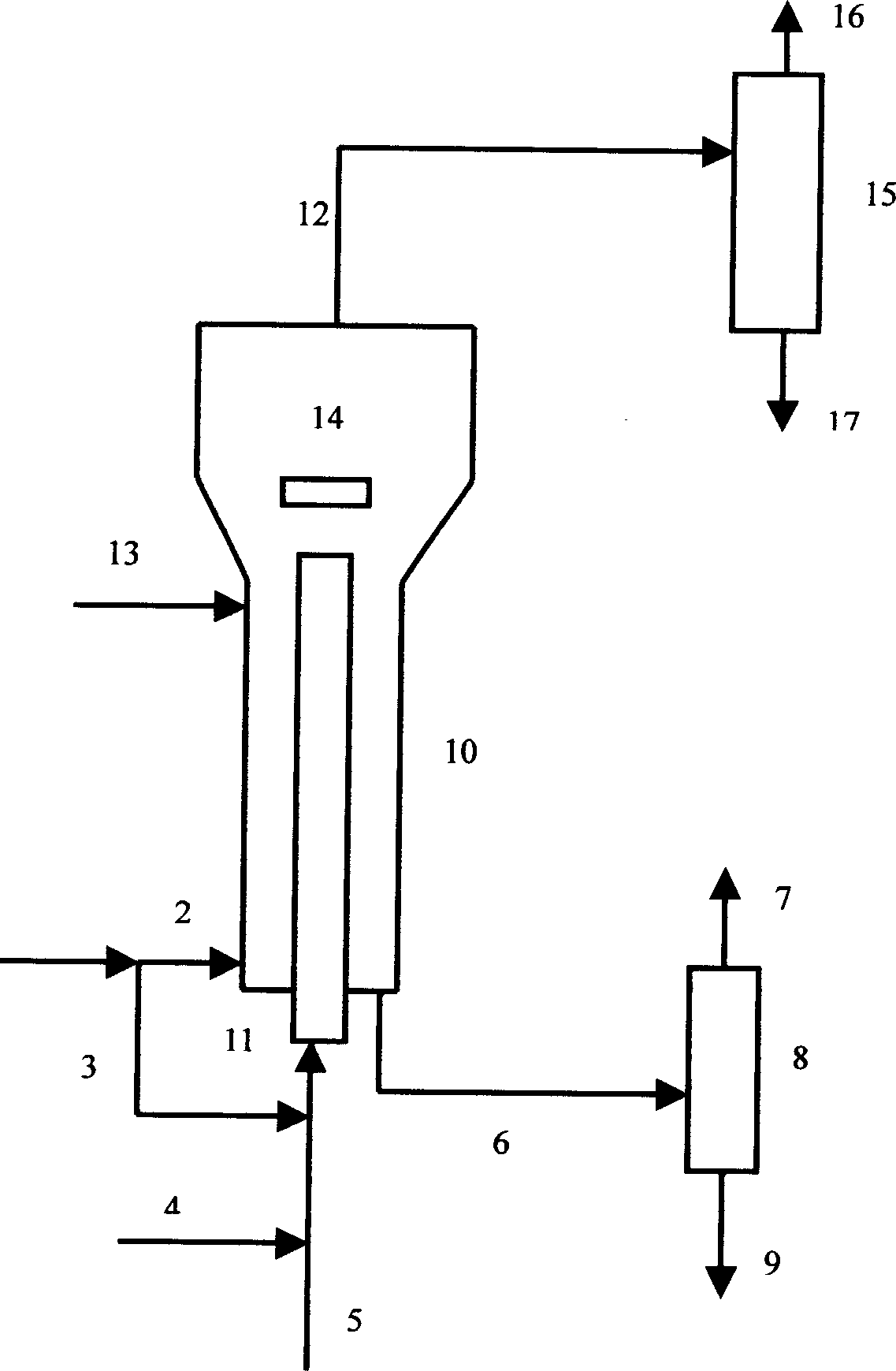Poor residuum hydroconversion method
A technology for residual oil hydrogenation and residual oil, which is applied in the fields of hydrocarbon oil cracking and petroleum industry. It can solve the problems of increasing the amount of coking in the reactor, high condensation reaction speed, and reducing the value of distillate oil, so as to improve the conversion rate of residual oil. , reduce coking reaction, reduce the effect of dry gas yield
- Summary
- Abstract
- Description
- Claims
- Application Information
AI Technical Summary
Problems solved by technology
Method used
Image
Examples
Embodiment 1~6
[0021] This test mainly investigates the coking performance of the tube-in-tube separation slurry bed hydrogenation process and the existing slurry bed process. The catalyst prepared in Example 9 of the published patent CN1045307C is used as the catalyst for this test. The catalyst is a water-soluble catalyst containing 5.6w% Mo, 0.7w% Ni and a p / Mo atomic ratio of 0.087. In this test, the residual oil slurry bed hydrogenation reaction was carried out on a continuous test device. Based on the total weight of the feedstock oil and the catalyst entering the reactor, the content of the catalyst therein is 300 ppm. See Table-1 for raw materials and properties of aromatic-rich feed, and Table-2 for operating conditions and reaction results. From Table-2, it can be seen that the coking performance of the pipe-in-pipe separation slurry bed hydrogenation process is much lower than that of the existing slurry bed process, and the tendency of overcracking is also lower than that of the...
Embodiment 7~10
[0027] This test mainly investigates the coke deposition of the slurry bed process of the present invention and the existing slurry bed process. Catalyst is the same as embodiment 1~6, and device operation is 360 hours. The test results are shown in Table-3. From Table-3, it can be seen that the amount of coke deposited by the slurry bed process of the present invention is much smaller than that of the existing slurry bed process.
[0028] Example
[0029] Example
PUM
| Property | Measurement | Unit |
|---|---|---|
| volume ratio | aaaaa | aaaaa |
Abstract
Description
Claims
Application Information
 Login to View More
Login to View More - R&D
- Intellectual Property
- Life Sciences
- Materials
- Tech Scout
- Unparalleled Data Quality
- Higher Quality Content
- 60% Fewer Hallucinations
Browse by: Latest US Patents, China's latest patents, Technical Efficacy Thesaurus, Application Domain, Technology Topic, Popular Technical Reports.
© 2025 PatSnap. All rights reserved.Legal|Privacy policy|Modern Slavery Act Transparency Statement|Sitemap|About US| Contact US: help@patsnap.com


